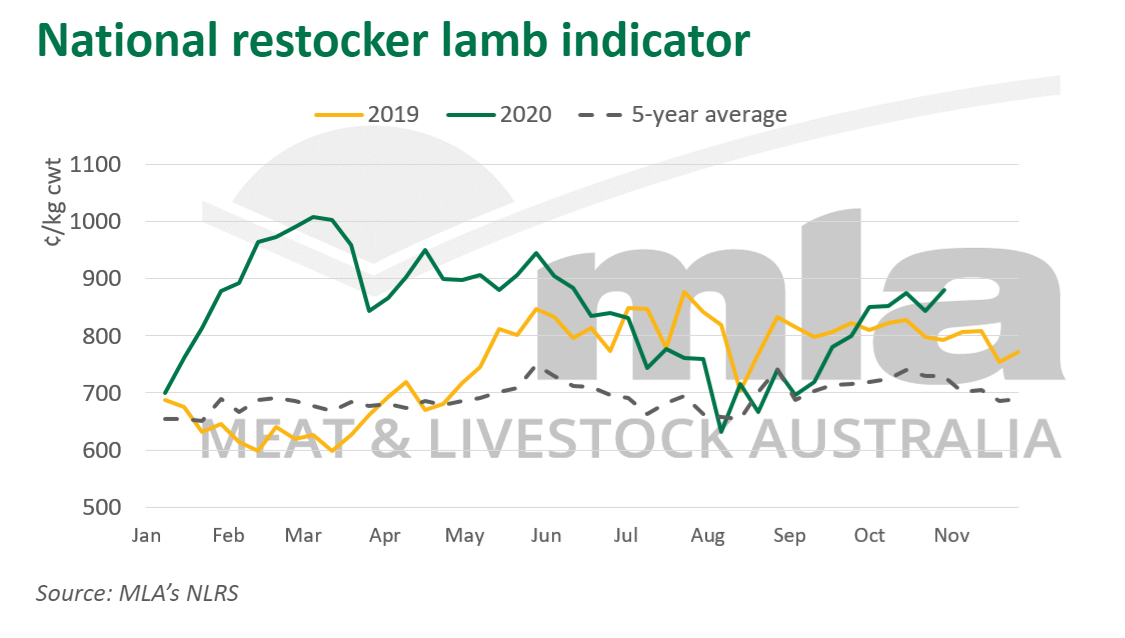Prices and yardings rise for restocker lambs
Key points
- National Restocker Lamb Indicator reached 887¢/kg carcase weight (cwt)
- Yardings of restocker lambs continue to rise as new season lambs enter the market
- Western Australia has not recorded as significant increases in restocker lamb prices
High restocker lamb prices have been a theme throughout the year for the eastern states, with the National Restocker Lamb Indicator hitting a record of 1,025¢/kg cwt on 10 March, before easing in August back to 632¢/kg cwt.
Since the slight dip in August, restocker lamb prices have rebounded, continuing to trend upwards. On 2 November, the National Restocker Lamb Indicator closed at 887¢/kg cwt, up 5% from the previous week and 13% on year-ago levels.
These high restocker lamb prices are widespread across the eastern states, where year-on-year increases are 31%, 24%, 10% and 10% for Queensland, NSW, Victoria and SA, respectively.
Historically, restocker lamb prices start easing between July and September as more new-season lambs enter the market. Over the last three years this trend has been amplified by unfavourable winter seasonal conditions, which have meant restockers have not had the capacity to absorb new season lambs in spring.
Recently yardings of restocker lambs have been lifting as new season lamb supply increases. There were 20,342 restocker lambs offered in the eastern states for the week ending 30 October, up from August 6 when 819 restocker lambs were offered. Over the same period, the national restocker lamb indicator has improved 40%, with South Australian restocker lamb prices improving by even more, at 48%.
This year, the increase of new season lamb supply from August to September has not applied downward pressure on east coast restocker prices, reflecting improved seasonal conditions in the eastern states. In turn, this has fuelled strong demand for restocker lambs as producers look to rebuild their flocks.
At present, other lamb saleyard indicators are still outperforming year ago levels, but not to the same extent as the National Restocker Lamb Indicator. The Light Lamb Indicator has climbed 13% on year-ago levels to 820¢/kg cwt. The National Trade Lamb Indicator has not risen as much, up only 4% on year-ago levels to 789¢/kg cwt, while the Heavy Lamb Indicator is slightly up 2% to 777¢/kg cwt.
WA has not enjoyed such high prices for restocker lambs this year, up 2% on year-ago prices. This is largely due to drier conditions in the state, which mean producers are not rebuilding as they are lacking widespread capacity to finish lambs.

© Meat & Livestock Australia Limited, 2020



